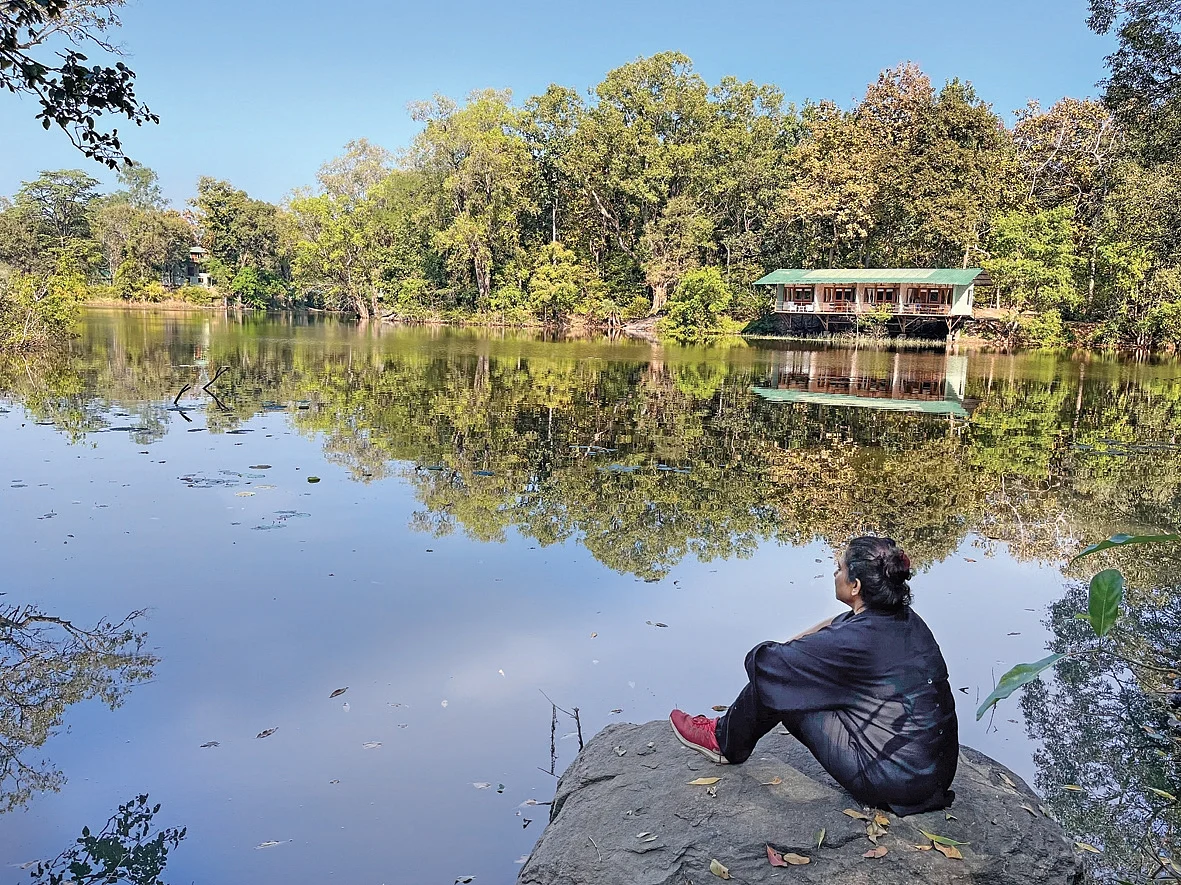A jungle hare caught in the headlight of safari jeeps stops momentarily to rear up on its hind legs to glare straight into the low beam; then continues to hop across the road. A thousand stars glitter overhead in the night sky; an hour defined by the repetitive chorus of cicadas. A few moments later, the engine revs as the jeeps get ready to exit the Rukhad gate, and leave the forest to its ancient solitude.
In the heart of Kipling land, lies a staggering 758 sqkm of the Pench National Park, divided by the Pench river, and shared by Maharashtra and Madhya Pradesh. While the park forms the unofficial wildlife ‘golden triangle’ of Central India, together with the Bandhavgarh and Kanha National Parks, an offshoot of Pench lies in obscurity, hidden from the world that passes by. Rukhad, also known as the Bison sanctuary owing to its healthy population of the Indian gaur, is the buffer section of Pench away from its core, a mixed dry deciduous forest flush with teak, crocodile bark, bamboo, Indian ebony or tendu and flowering trees such as amaltas and mahua that together run an ecosystem of their own.

It is also one of the few stretches that stays open round the year unlike the core park zones that shut down in the monsoon. The accommodation inside the Park is Jal Mahal, an old Forest Rest House, now restored and run by Jungle Camps India as part of the Rukhad Jungle Camp. It retains an old-world essence: muted colours, a charming ‘dabba’ service, a terrific sustainability.























